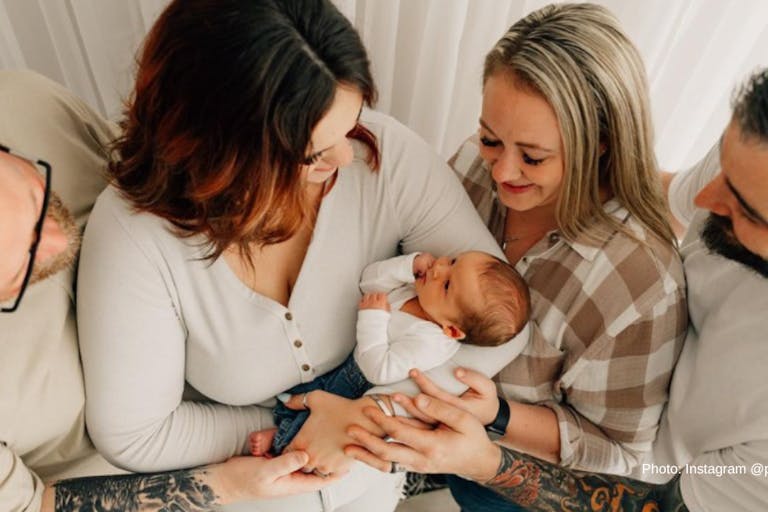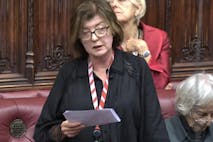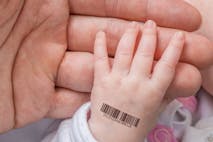
Queensland’s smallest baby born weighing just 360 grams
Melissa Manion
·
Polyamorous ‘family’ justifies sexual choices by claiming it benefits their children. It doesn’t.
A polyamorous quad of two married couples has gained a large following on social media as they promote their lifestyle and the erroneous idea that DNA is not important in a family structure. Decades of research show it is. And despite their choice to broadcast their lives on social media, they slam viewers who ask questions about their group dynamic. But questions — and concerns — abound.
Married couples Taya and Sean Hartless and Alysia and Tyler Rodgers were both looking to “spice up their marriages,” reports Cafe Mom. They met online, “fell in love” with each other, and decided to move in together. The Rodgers family had two children already.
“Our kids already knew we were dating Sean and Taya,” Tyler told Today. “We told them: ‘You know mom has a boyfriend and dad had a girlfriend and we’re going to move in together, and we’re all going to be a big family and they’re going to help parent you, so we’re going to need you to treat them like you treat us — like parents.'”
The men rotate between the women’s bedrooms every other night. Eventually, they added three more children to the group, but they did not and will not learn who the father of each baby is. Alysia said they “did not regulate the biology” of the babies and Taya claimed that “finding out their genetics would change nothing.” Yet, if they learned that one of their babies had been accidentally swapped with a different baby in the hospital and gone home with someone else, would biology matter then?
Biology always matters, not just when adults want it to.
This is about adult desires
The “quad” — which calls itself along with the children a “polyfamory” to incorporate that they are a “poly-family” — claims that the arrangement is good for children because there are four adults to handle the challenges of parenting. “We have four sets of adult hands to work on things,” Tyler says. “It’s very rare, I think, for people to have that kind of help.”
But help with parenting wasn’t the driving force behind forming their relationships; otherwise, they could have hired a nanny. No, they said, “When we met, we were just looking for something simple and physical…”
Their decision to be polyamorous stems from the sexual desires of adults, not the yearning to create a better life or bigger family for their children.
A pro-polyamorous paper published by Psychology Today confirms that such a setup is about sex. It claimed that polyamorous relationships give women more power in their relationships, cause women to reject traditional sex and gender roles, and empower women who have a high sex drive and want multiple partners to abandon monogamy.
Parents in a polyamorous relationship justify their sexual choices by claiming it benefits their children. It doesn’t.
The best structure for children
While day-to-day tasks might be easier for the adults in the quad since three adults are working and one is at home to raise the children, research has shown that having multiple adults or non-biologically related adults in the home is not beneficial or safe for children. The healthiest situation for children is to be raised by their married, biological parents.
Jane Anderson, author of the study, “The impact of family structure on the health of children: Effects of divorce,” explained:
Nearly three decades of research evaluating the impact of family structure on the health and well-being of children demonstrates that children living with their married, biological parents consistently have better physical, emotional, and academic well-being. Pediatricians and society should promote the family structure that has the best chance of producing healthy children.
Yes, in the current situation for this quad, the biological parents are in the home. However, there is also negative data on the outcomes for children who live with non-biologically related parental figures. One study found, “In studies across a wide range of cultures… [t]he single best predictor of child abuse is the presence of a stepparent in the home. In fact, the risk of even unintentional deaths, such as drowning, is greater in stepfamilies than in intact or single-parent families.” At least one of the adults in polyamorous units functions as a stepparent. In this quad’s case, two parents do for each child, and the Rodgers children were forced to begin treating two virtual strangers as their new parents.
Article continues below
Dear Reader,
In 2026, Live Action is heading straight where the battle is fiercest: college campuses.
We have a bold initiative to establish 100 Live Action campus chapters within the next year, and your partnership will make it a success!
Your support today will help train and equip young leaders, bring Live Action’s educational content into academic environments, host on-campus events and debates, and empower students to challenge the pro-abortion status quo with truth and compassion.
Invest in pro-life grassroots outreach and cultural formation with your DOUBLED year-end gift!
James Lopez was raised until the age of six in a family that included his mother and father as well as his father’s other partner and their son — his half-brother who was three months older than he was. Even though his biological parents were both present in the home, he explained that his childhood was “confusing and troubling.”
“[…] I was never the center of my father’s attention,” he said, “especially when he would mistreat my mom and when he would show affection to my half-brother’s mom. I hated seeing my father show affection to another woman who was not my mom.”
Lopez’s father eventually left to start another family with a different woman.
“Children have a right to be loved and nurtured by the two parents who helped create them. They have the right to live in an environment suitable for the raising of a child, not one that is only concerned with the fulfillment of adult desires,” he said.
In addition to the emotional confusion, researchers from another study found that “[Y]oung children who reside in households with an unrelated adult are at nearly 50-fold risk of suffering a fatal inflicted injury, compared with children residing with two biological parents.”
In addition, research shows that, sadly, the risk of sexual abuse is greater for children living in blended families. One study reported its “results are consistent with prior research that shows the presence of a non-related parent figure in a household is associated with a greater than expected risk of sexual or physical abuse to children.”
In this case, two adults moved into a home in which another couple’s children lived and where the adults would openly promote breaking sexual norms.
This isn’t to say that the Rodgerses or the Hartlesses are child abusers. But their situation is a high-risk one for their children because blended families increase a child’s chances of being exposed to a perpetrator — whether that be an adult such as a step-parent or live-in partner or another child such as a step-sibling.
Children have a right to know where they come from
While the quad doesn’t think DNA is important when it comes to parenting, the children think otherwise. Research on adoption and children conceived using donor sperm or eggs has shown that the majority of children have a deep desire to know where they come from. Ninety-four percent (94%) of adopted persons expressed the desire to know which birth parent they resemble most — which can be difficult when you don’t know who your birth parent is.
Leila Miller, publisher of “Primal Loss: The Now-Adult Children of Divorce Speak,” gathered stories of the now-adult children of divorced parents, which show that the notion that ‘if the parents are happy, the kids will be happy’ is completely wrong. Even if children appear happy, many of them are faking their happiness so as not to upset their parents. When children do voice their unhappiness to their parents, they are often met with pushback and efforts by the adults to convince the children that everything is fine.
John, whose parents announced new sexual identities to him, explained, “One of the harshest realities of all of this is, though I love my mom and dad, it’s not enough to accept their choices and do the best to love them where they are at. Instead, I’ve been too often scorned for not adapting to and even celebrating my parent’s new sexual identities.”
In this quad’s case, the biological parents are in the home and no one is divorced. However, despite their non-expert claims that the situation is good for their children, actual experts know it isn’t. Plus, what happens if the couples decide to go their separate ways? Who is on the children’s birth certificates? Will a child be separated from one biological parent because the other biological parent is married to someone else? Will the couples split up completely or will one or two leave the group to fulfill new sexual desires? Will they invite more adults into the mix to “spice” things up even more? Will they divorce each other for one another?
It’s a situation that is ripe for drama and trauma and a custody case that makes national headlines. No one in this “family” seems to consider what the children are actually going through and will go through in the future while their parents are fixated on their sexual desires and on sharing their private lives with the world.

Live Action News is pro-life news and commentary from a pro-life perspective.
Contact editor@liveaction.org for questions, corrections, or if you are seeking permission to reprint any Live Action News content.
Guest Articles: To submit a guest article to Live Action News, email editor@liveaction.org with an attached Word document of 800-1000 words. Please also attach any photos relevant to your submission if applicable. If your submission is accepted for publication, you will be notified within three weeks. Guest articles are not compensated (see our Open License Agreement). Thank you for your interest in Live Action News!

Melissa Manion
·
Politics
Cassy Cooke
·
Guest Column
Right to Life UK
·
Issues
Angeline Tan
·
Issues
Bridget Sielicki
·
Issues
Nancy Flanders
·
Human Interest
Nancy Flanders
·
Analysis
Nancy Flanders
·
Politics
Nancy Flanders
·
Activism
Nancy Flanders
·
Issues
Nancy Flanders
·